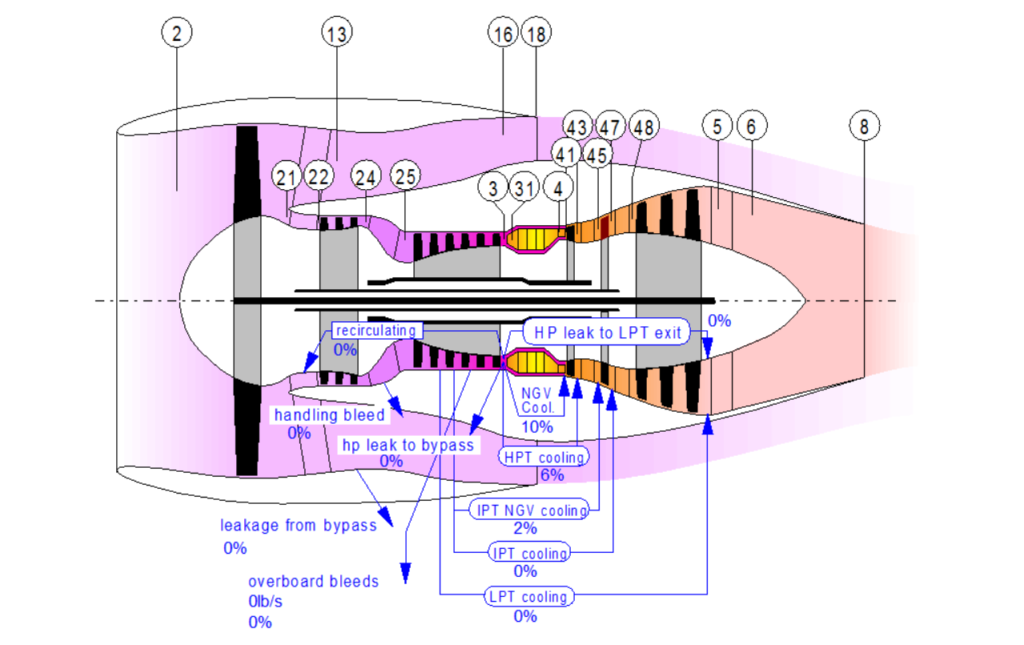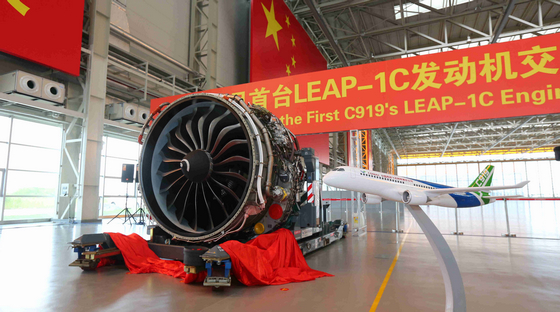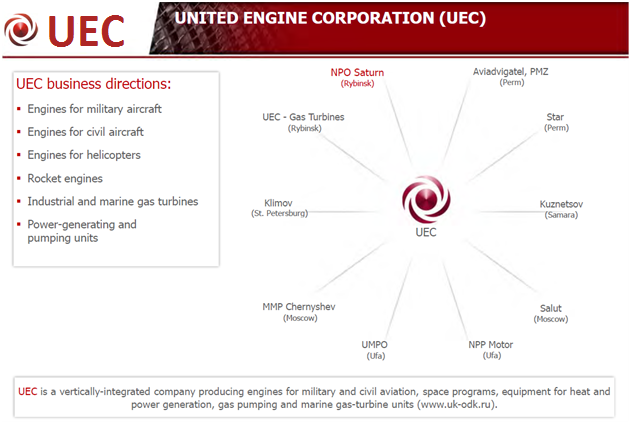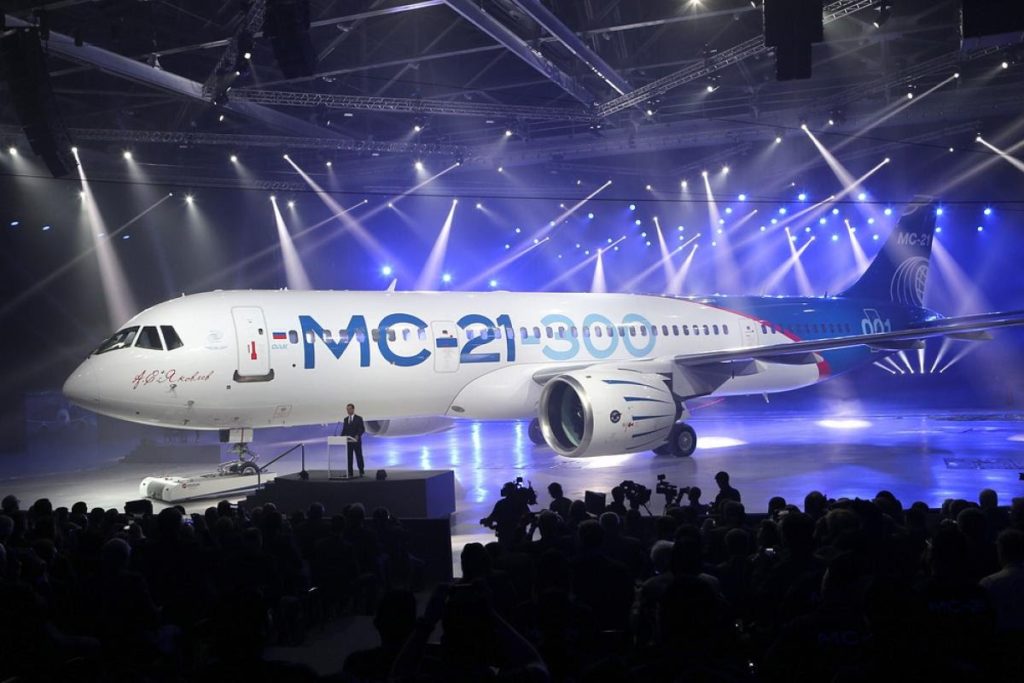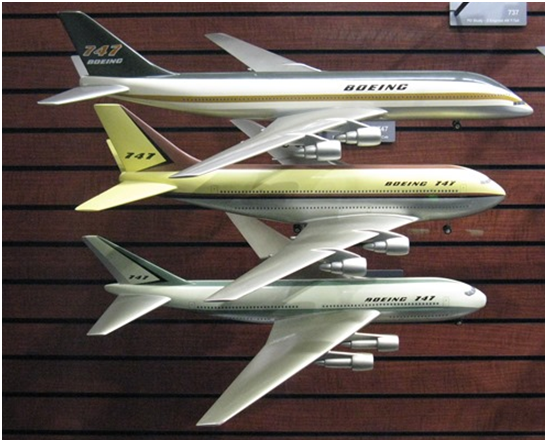Leeham News and Analysis
There's more to real news than a news release.
Bjorn’s corner; Turbofan engine challenges; Part 2
November 04, 2016, ©. Leeham Co: We will now start to go through a modern turbofan airliner engine and look at the technologies which are used and what are their technical challenges. We will start today with the engine intake and the fan.
To make things concrete, we will use a GasTurb simulation of a Rolls-Royce Trent XWB 84k engine. This will provide us with realistic example data for the different parts of the engine. I want to stress that all values are assumed as typical for such an engine. I have no specific knowledge of the Trent XWB and will not use any data outside what is public information.
The GasTurb cross section of a three-shaft turbofan is shown in Figure 1. We will use the station numbers in the figure to navigate the engine and the data from the simulation to understand modern airline engines and their typical data. Read more
Bjorn’s Corner: Turbofan engine challenges, Part 1
October 28, 2016, ©. Leeham Co: Before we go into the details on the innards of airliner turbofans, we will look at some basics. We do that so that everyone is on the same page.
A turbofan engine generates thrust by pumping air out the back of the engine. This air has a higher speed than surrounding air. Air is actually quite heavy: it weighs 1.2kg per m3 at sea level. By kicking out air at an overspeed in relation to the aircraft, thrust is generated.
In a modern turbofan, the kicking gets done by the fan to 80-90% in the modern By Pass Ratio (BPR) 8-10 engines. A single aisle engine generating 10 tonnes of thrust throws around 350kg of air per second backwards at close to sound speed in a take-off situation. To drive the fan to do that, there is a lot of shaft horse-power needed, around 30,000hp.

Figure 1. Work cycle for jet engine/turbofan core compared to car engine. Source: Rolls-Royce book “The Jet Engine.”
These hp are generated by the core. The thermodynamic cycle to generate all these hp in a jet engine or turbofan core (we call both a gas turbine) is like the one in a normal car engine, Figure 1, with the difference that it is a continuous cycle.
We will now go through this cycle in steps. Read more
Bjorn’s Corner: The Engine challenge
October 21, 2016, ©. Leeham Co: In our Corners on East bloc aeronautical industries, we could see that the hardest part to master in a new civilian airliner is the engine.
Both new airliners from Russia and China (Irkut MC-21 and COMAC C919) start their lives with Western engines.
Why is this so? What are the challenges that make engines harder to create than aircraft?
We will spend several Corners on the main reasons that airliner engines are harder to do than aircraft. Read more
Bjorn’s Corner; The Engine Research Institutes
October 14, 2016, ©. Leeham Co: In our Corners on East bloc aeronautical industries, we will now look at the role of the Research Institutes in Russian and Chinese civil aircraft engine development.
The Russian engine industry is organized similarly to the aircraft industry. It has a powerful research organization which has a much larger role than research organizations in the West.
A large part of fundamental design work and testing is done at the research institute and not at the design bureau level, Figure 1.

Figure 1. PD-14 engine altitude testing at the Central Institute of Aviation Motor Development (CIAM) in Moscow. Source: CIAM.
The Chinese organization of the engine industry is similar, the difference being that the research organizations are organized within the giant AVIC (Aviation Industry Corporation of China) grouping, rather than reporting to the state via a research organization path. Read more
Bjorn’s Corner: The Chinese aircraft engine industry
October 07, 2016, ©. Leeham Co: In our Corners on East bloc aeronautical industries, we will now look at the Chinese civil aircraft engine industry.
The Chinese engine industry is closely modeled after the Chinese aircraft industry that we looked at last week. It is organized as divisions and later subsidiaries to the major aircraft companies. Contrary to the Chinese aircraft industry, it has had major problems in gaining the necessary know-how to start developing and producing its own designs.
The industry has built Soviet designs on license since the 1950s and only recently managed to present functional own designs, after many failures.
Bjorn’s Corner; The Chinese civil aircraft industry
September 30, 2016, ©. Leeham Co: In our Corners on East bloc aeronautical industries, we will now look at the Chinese civil aircraft industry.
The Chinese aero industry has similarities with the Russian industry in its overall structure. From the start of the industry in the 1950s, it was structured after the Soviet model of research institutes, design bureaus and production companies.
The difference to the Soviet Union was that its own Chinese aircraft designs only started in the 1970s. Before that, the industry built Soviet designs on license and then modified versions of licensed designs.
The first own aircraft designs were presented in the 1980s with a focus on military designs for the first 20 years. Read more
Bjorn’s Corner; The Russian civil aircraft engine companies
September 23, 2016, ©. Leeham Co: In our Corners on East bloc aeronautical industries, we now look at the main Russian civil aircraft engine companies. As with the aircraft side, there is one overall Russian engine company since 2008, United Engine Corporation (UEC), Figure 1.
This is a state-owned holding which incorporates 80%of the gas turbine engine companies from the Soviet times, employing 80,000 people.
The aim is to coordinate and optimize Russia’s engineering and production resources around present and future gas turbine engines for Aeronautical, Naval and Stationary use.
Soviet and Russian engines have historically been named after their chief designer in the design bureau. We will now describe the main entities in UEC that work with airliner engines. Read more
Bjorn’s Corner; The Russian civil aircraft companies
 September 16, 2016, ©. Leeham Co: In our Corners on East bloc aeronautical industries, we will now look at the main Russian civil aircraft companies. There is one overall company since 2006, United Aircraft Corporation (UAC).
September 16, 2016, ©. Leeham Co: In our Corners on East bloc aeronautical industries, we will now look at the main Russian civil aircraft companies. There is one overall company since 2006, United Aircraft Corporation (UAC).
This is a state-owned holding which incorporates 30 of the main companies from the Soviet times, employing 100,000 people. The aim is to coordinate and optimize Russia’s project and production resources around the present aircraft and the future projects that Russia can afford to drive.
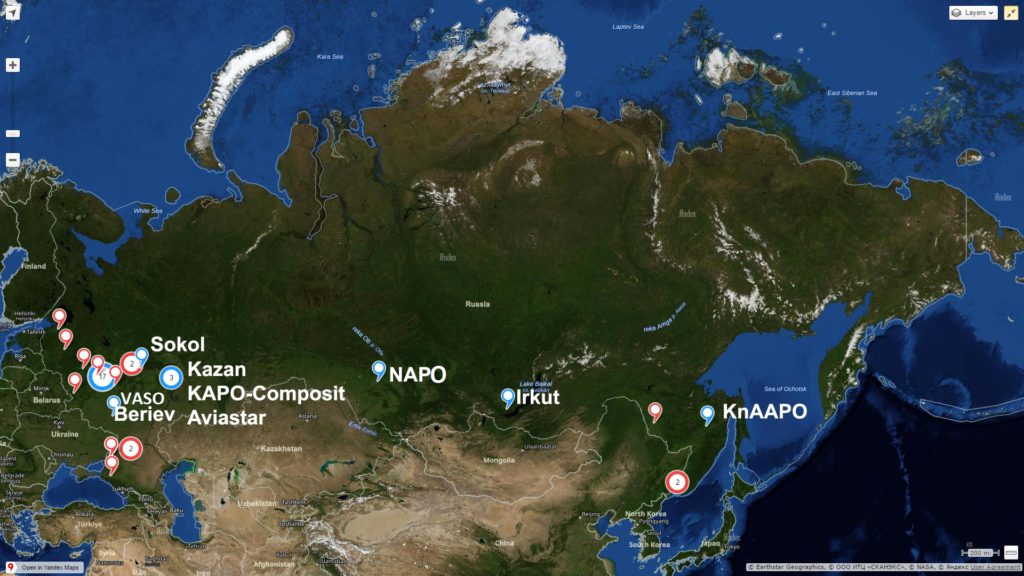
Figure 1. Map of UAC Companies in Russia outside of Moscow region. Red markers are MRO. Source: UAC.
UAC consolidates several company groups that were formed after the fall of the Soviet Union 1990 and up to the formation of UAC in February 2006.
We will now dissect the main UAC groups and companies that are involved in civil aircraft development and production. Read more
Bjorn’s Corner: East bloc aeronautical industries
September 09, 2016, ©. Leeham Co: The Western world civil aeronautical industry developed a number of new aircraft (Boeing 787, Airbus A350, Bombardier CSeries, Mitsubishi’s MRJ) or aircraft variants (A320neo, 737 MAX, A330neo, Embraer’s E-Jet E2) during the last 15 years. The last of these projects (A330neo) is entering flight tests within six months.
Over the next 10 years there will be few new Western hemisphere aircraft projects. But there will be action in the east, in Russia and China. We therefore will cover these projects in more and more articles.
To give a background to these articles, I will spend some Corners to describe some of the differences between the Western and Eastern aeronautical industry. A lot of these differences will come from the industry’s history. We will start with Russia’s airframe industry. Read more
Bjorn’s Corner: Aeronautical greats
By Bjorn Fehrm
September02, 2016, ©. Leeham Co: One of our aeronautical greats, Joe Sutter, left us this week. He’s one of the characters in aeronautics that I admire for his capability to find what is the right thing to do, take the tough decision and fight it through.
Sutter was the chief engineer for the Boeing 747 project that found that the original idea of stacking two 707s on top of each other, Figure 1, was wrong and instead took the long route to explain what was the right way to go, dual aisle and 10 abreast. Read more


